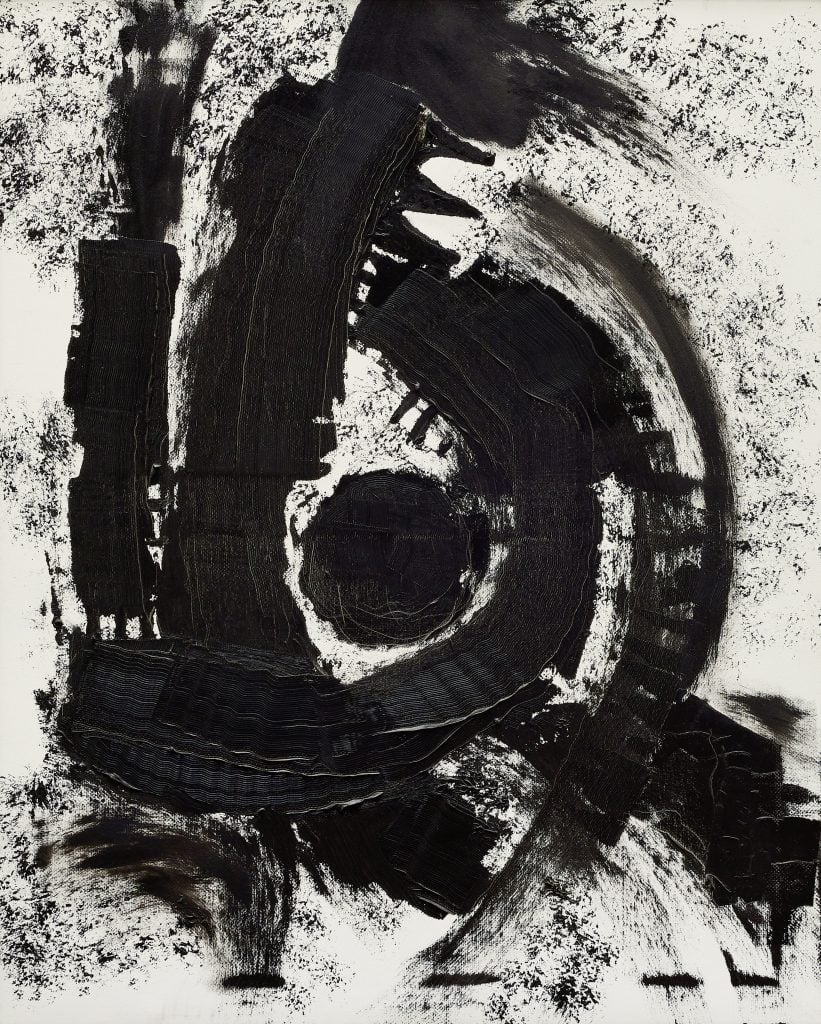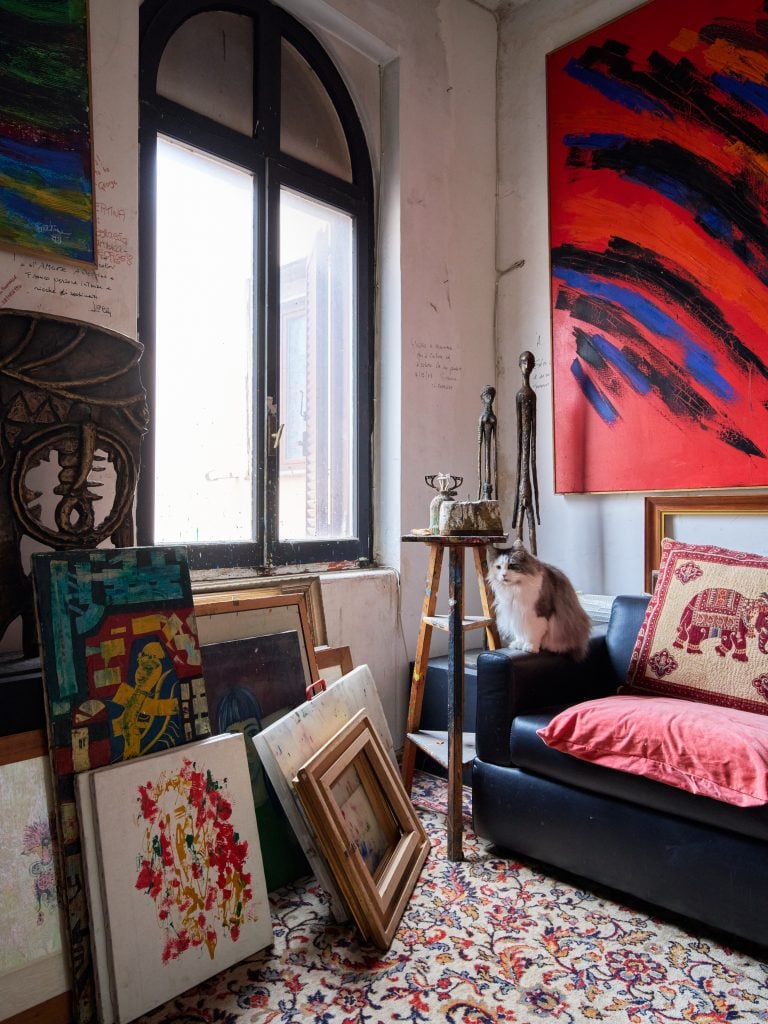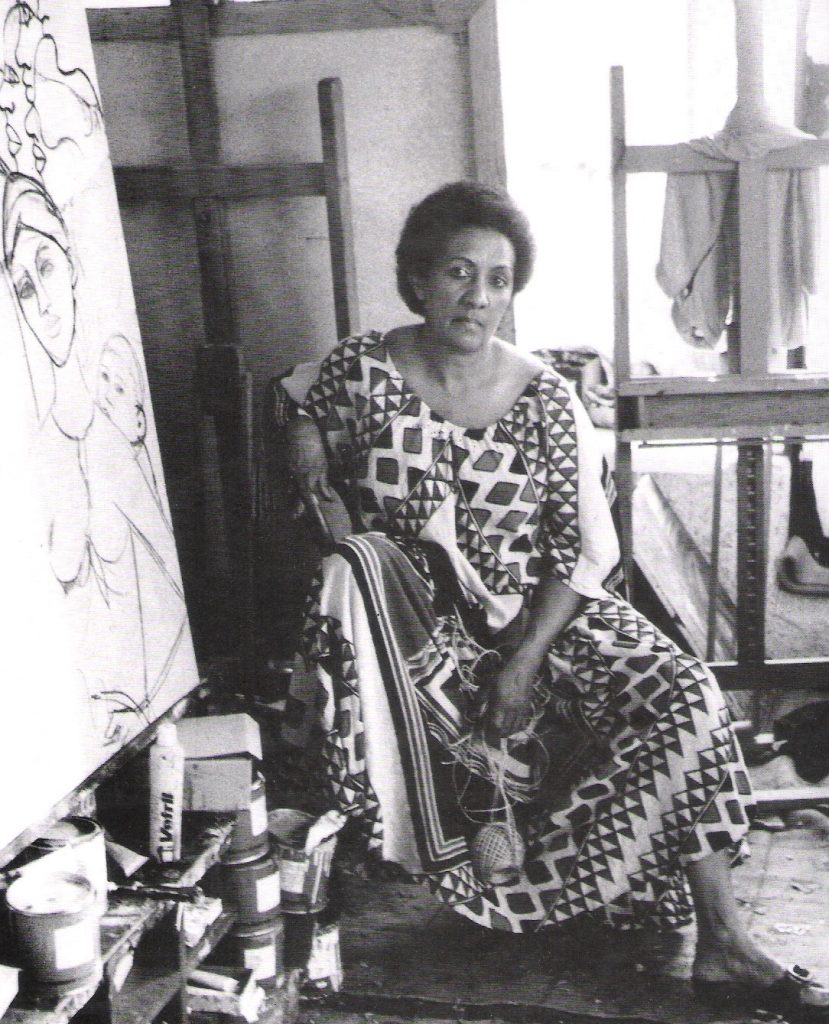Auctions
Work of the Week: Bertina Lopes’ ‘Protesta’
Bonhams recently offered work straight from the studio of the late artist and activist, a star of the current Venice Biennale.

Bonhams recently offered work straight from the studio of the late artist and activist, a star of the current Venice Biennale.

Margaret Carrigan

Work of the Week is excerpted from The Back Room, our lively recap funneling only the week’s must-know art industry intel into a nimble read you’ll actually enjoy. Artnet News Pro members get exclusive access—subscribe now to receive this in your inbox every Friday.
Dubbed the mother of contemporary African painting, Bertina Lopes was also a sculptor and ardent activist. Her abstract works fuse European modernism with traditional African symbolism, and are imbued with social criticism of the colonial, fascist politics that gripped her native Mozambique through the mid 1900s up until the end of the nation’s civil war in 1992. A recent online sale at Bonhams, running from June 4 through 20, featured 57 paintings, drawings, and sculptures spanning her prolific career—all of which were straight from the late artist’s studio.

Bertina Lopes’ Studio in Rome. Courtesy of Bonhams.
Protesta (1990) was one of the top lots of the sale, fetching £12,160 ($15,386), around 50 percent more than its £8,000 presale high estimate. Known for her vibrant canvases, the work is a bit of an outlier in her oeuvre due to its stark black and white forms, which have an echo of Robert Motherwell to them. The work was sold on behalf of the Lopes’ estate.
A 1974 untitled canvas set the reset artist’s auction record last October when it sold for $36,745 in an online sale at the Italian auction house Capitolium Art. According to the Artnet Price Database, that sum was 600 percent over its estimate.
Born to Portuguese-Mozambican parents in 1924, Lopes moved to Lisbon at an early age to study, where she was influenced by European modernism. She moved back to Mozambique in 1953 to teach but, by 1961, her outspoken activism forced her to leave the country. She returned to Lisbon but was further pursued by Portuguese police; she then fled to Rome in 1963, where she lived until her death in 2012.

Bertina Lopes in 1986. Courtesy of Archivo Bertina Lopes.
Lopes continued her political militancy from Italy, and her Roman studio became a salon for African and European diplomats, journalists, and intellectuals, among them Mozambique presidents Joaquim Chissano and Armando Guebuza. With the Roman Catholic lay organization “Community di Sant’Egidio” and the United Nations, she helped mediate for the peace accords in 1992, ending 15 years of civil war in her home country.
Several of Lopes’ works are currently included in the “contemporary nucleus” exhibition at the 60th Venice Biennale, on view through November. Earlier this year, the Museo delle Civiltà in Rome dedicated an exhibition to Lopes’ studio as a site of resistance, featuring a partial reconstruction of the space. In 2022, Richard Saltoun Gallery held a retrospective celebrating the artists’ 70-year-long career at its outpost in Rome, marking the 10-year anniversary of her death.